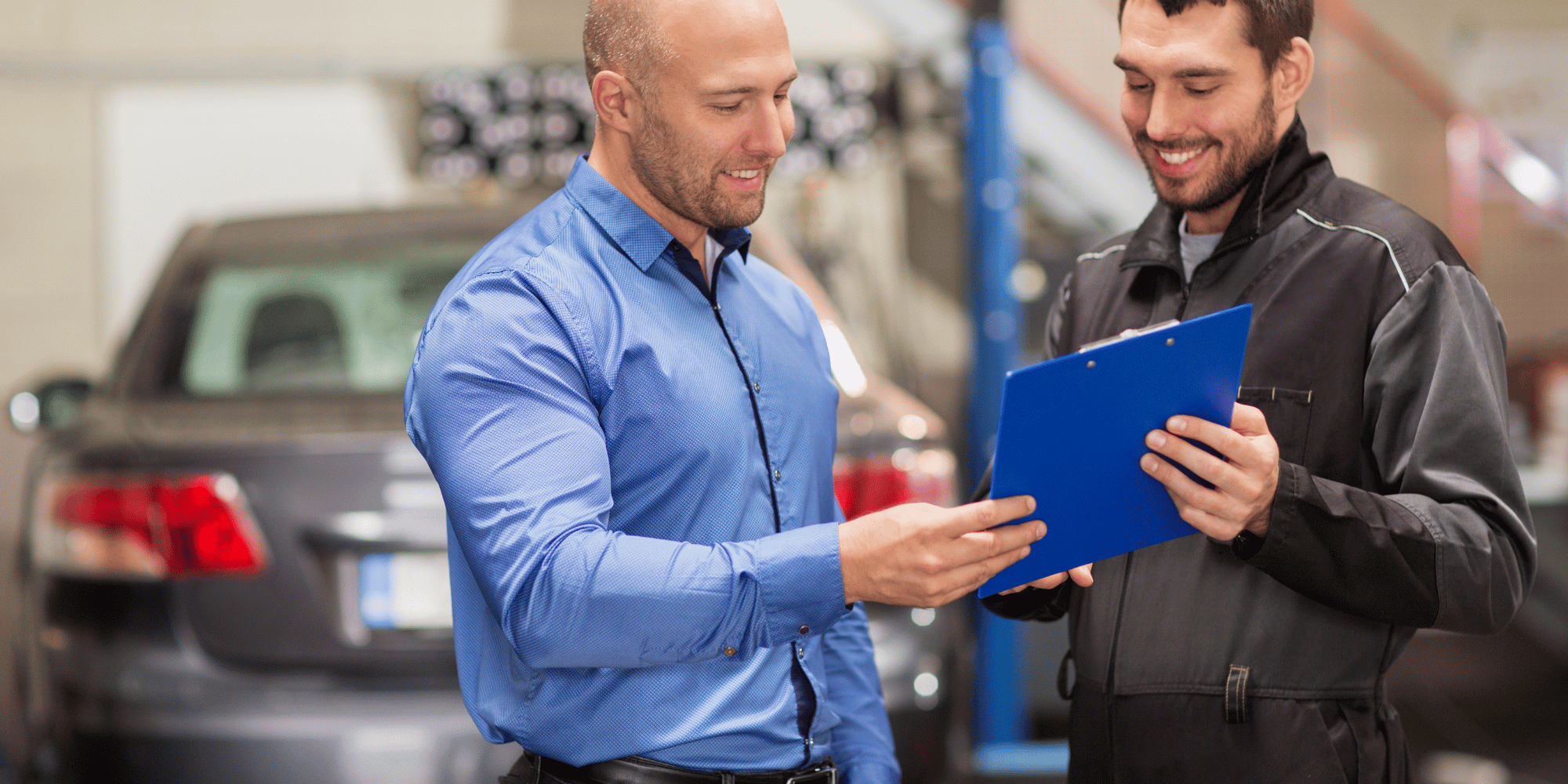In today’s competitive digital landscape, simply relying on traditional advertising or word-of-mouth marketing won’t cut it for auto repair shops. With more consumers turning to Google to search for local services, it’s crucial to have a strong online presence. If your auto repair shop isn’t ranking well on search engines, you’re likely missing out on valuable business opportunities.
This is where auto repair shop SEO (Search Engine Optimization) comes into play. SEO is the process of optimizing your online presence to increase your visibility on search engines like Google, helping your shop rank higher and attract more customers. It’s about making your website more discoverable to those actively looking for the services you provide.
In this blog post, we will explore five essential auto repair shop SEO strategies that can significantly boost your visibility, increase traffic to your website, and drive more customers to your business.
1. Local SEO: Optimizing Your Shop for Local Searches
For an auto repair shop, local SEO is a game-changer. Since most people searching for auto repair services want to find a shop near them, optimizing your online presence for local searches is crucial. In fact, over 46% of all Google searches are looking for local information, and these users are ready to take action.
Here’s how to optimize your auto repair shop for local SEO:
a. Optimize Google My Business (GMB) Listing
One of the most important aspects of local SEO is Google My Business. When someone searches for auto repair services in their area, your GMB listing is often the first thing they’ll see. If you haven’t claimed and optimized your Google My Business listing, now is the time to do so.
Key GMB optimization tips for auto repair shops include:
- Claim and Verify Your Business: If you haven’t already, claim and verify your Google My Business profile to ensure you’re listed in local search results.
- Update Your NAP Information: Ensure that your Name, Address, and Phone Number (NAP) are consistent across all platforms.
- Add Detailed Service Information: Include a detailed description of your services, making sure to include keywords like “auto repair shop,” “car repair,” and specific services you offer.
- Upload Photos: Google rewards businesses with active and engaging profiles. Upload clear, high-quality photos of your shop, services, and staff to create a better experience for users.
- Encourage Customer Reviews: Reviews are critical for your local SEO ranking. Positive reviews can improve your visibility and reputation. Respond to customer feedback to show that you value their input.
b. Build Local Citations
Local citations are mentions of your business on other websites, such as local directories or news outlets. Google uses these citations to validate your business’s legitimacy. The more citations your auto repair shop has, the better your local SEO will perform. Make sure to list your business in major directories like Yelp, Yellow Pages, and Angie’s List.
Consistency is key here—ensure that your NAP information is consistent across all platforms. Inconsistent details can confuse Google and hurt your local rankings.
c. Local Keywords Are Key
Your keywords should reflect your location and the services you offer. For example, instead of simply using the broad term “auto repair,” target long-tail local keywords such as “auto repair shop in [City Name]” or “best car repair service near me.” These keywords help you rank for local searches, making it more likely that nearby customers will find your business.
2. Mobile Optimization: Ensure Your Website is Mobile-Friendly
In today’s world, more than 60% of all Google searches happen on mobile devices. This means that having a mobile-friendly website is not only important for your users’ experience—it’s also a key factor in your auto repair shop SEO.
Here are some ways to optimize your website for mobile users:
a. Responsive Website Design
A responsive website design automatically adjusts to fit any screen size, ensuring that users on smartphones and tablets can navigate your site easily. Google rewards mobile-friendly websites with higher rankings, so make sure your website is fully optimized for all devices.
b. Fast Page Load Speeds
Page load speed is an important factor for both user experience and SEO. Slow-loading websites frustrate visitors and cause them to leave, which can hurt your rankings. Use tools like Google PageSpeed Insights to identify any areas of improvement. Common solutions include compressing images, reducing JavaScript files, and enabling browser caching.
c. Clear and Simple Navigation
Mobile users need to find information quickly and easily. Ensure that your website’s navigation is clear and simple. Use a hamburger menu or easy-to-access buttons for key information like your phone number, services, contact form, and location.
d. Click-to-Call Functionality
Including a prominent click-to-call button is essential for mobile users. When someone is on the go and in need of immediate assistance, a quick call to your shop could convert them into a customer. Make sure this feature is visible and functional on all mobile devices.
3. Create High-Quality Content to Attract and Educate Customers
Content marketing is a critical component of auto repair shop SEO. By publishing informative, keyword-rich content, you can position your shop as a trusted authority in the auto repair industry. High-quality content not only attracts visitors to your site but also helps improve your search rankings.
Here’s how you can create content that boosts your SEO:
a. Start a Blog
A blog allows you to share useful information about auto repair, maintenance tips, and other relevant topics. Regularly publishing blog posts can help you rank for long-tail keywords, which are often less competitive and easier to rank for.
Blog topics for an auto repair shop might include:
- “How to Extend the Life of Your Car’s Brakes”
- “What to Do When Your Car Won’t Start”
- “Top 5 Common Auto Repair Myths Debunked”
- “How to Prepare Your Vehicle for Winter Weather”
Make sure your blog posts are informative, engaging, and optimized with relevant keywords like “auto repair services,” “brake repair,” and “car maintenance.”
b. Service Pages
Each service you offer should have its own dedicated page with detailed, optimized content. For instance, you should have separate pages for brake repair, oil changes, engine diagnostics, and tire replacements. These pages should include relevant keywords, a clear description of the service, and an explanation of the benefits to the customer.
c. Customer Testimonials and Case Studies
Customer testimonials are an excellent form of content that boosts your credibility and improves your SEO. Adding real customer reviews and success stories to your website can help build trust with new visitors and keep them engaged. Make sure to include keywords naturally within these testimonials to improve your relevance for certain searches.
4. On-Page SEO: Keyword Optimization Across Your Website
On-page SEO is the practice of optimizing individual web pages to rank higher and attract more traffic. For auto repair shop SEO, this means using the right keywords throughout your website, including in titles, headings, content, and metadata.
Here’s how to implement on-page SEO effectively:
a. Keyword Research
Start by researching keywords that are relevant to your auto repair services. Use tools like Google Keyword Planner, SEMrush, or Ahrefs to identify high-volume, low-competition keywords. Focus on both short-tail keywords (e.g., “auto repair”) and long-tail keywords (e.g., “affordable auto repair shop in [City Name]”).
b. Optimize Meta Tags
Ensure your title tags and meta descriptions are optimized for search engines. The title tag should include the main keyword for the page, such as “Auto Repair Services in [City Name]” or “Trusted Brake Repair in [City Name].” The meta description should briefly summarize the page and encourage users to click through to your site.
c. Use Header Tags Appropriately
Headers (H1, H2, H3) structure your content for both users and search engines. Make sure your primary keyword appears in your H1 header and use secondary keywords in H2 and H3 headers. This helps search engines understand the main topics of your page and improves your chances of ranking.
d. Include Internal Links
Link to other pages on your website to help visitors easily find related content. For example, if you have a page about brake repair, link to it from other pages like tire services or engine diagnostics. Internal links not only keep visitors on your site longer but also distribute link equity across your pages, boosting your SEO.
5. Improve Your User Experience (UX)
Google takes user experience (UX) into account when ranking websites. If your website is difficult to navigate, cluttered, or slow to load, visitors will leave quickly, which can negatively affect your SEO performance.
Here’s how to improve the UX on your auto repair shop’s website:
a. Simplify Navigation
Clear, easy-to-use navigation is essential. Make sure your website visitors can quickly find key information like your services, contact details, and location. Avoid overloading your menu with too many options and focus on providing the most important information upfront.
b. Call-to-Action (CTA) Buttons
Your website should have clear CTAs that guide users toward taking the next step. Whether it’s scheduling an appointment, calling your shop, or getting a free estimate, make sure your CTA buttons are visible and compelling. For example, use CTAs like “Schedule Your Appointment Today” or “Get a Free Repair Estimate.”
c. Mobile-Friendly Layout
Your website should be mobile-friendly, as a significant portion of your audience will access your site from smartphones and tablets. Google favors mobile-friendly websites, so ensure that your layout is optimized for mobile users. This includes making buttons large enough to click, ensuring text is legible, and using responsive design.
Optimizing your auto repair shop’s website for SEO is essential for growing your business in today’s competitive online environment. By focusing on local SEO, mobile optimization, content marketing, on-page SEO, and improving the user experience, you can increase your visibility on Google, attract more potential customers, and ultimately grow your auto repair shop.
Implementing these strategies requires patience and consistency, but with time, you’ll see the results in increased traffic, better search rankings, and more customers walking through your door. If you’re unsure where to start, consider working with an SEO expert or digital marketing agency that specializes in auto repair shops to help you maximize your online potential.



